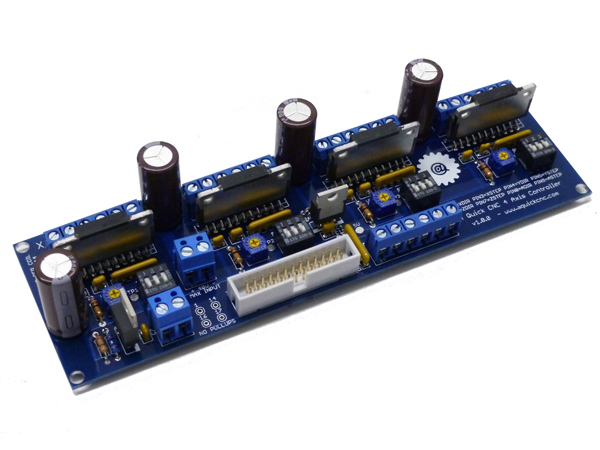- Sun Jul 29, 2012 6:17 pm
#591
Many of our CNC Building Blocks backers have asked us for inspiration on what kind of CNC machine to build with the building blocks. We'll be posting prospective designs here, and ask that if you have any.. please feel free to add them to this thread.
Here is one. This is literally one of the simplest CNC machines you can make. It requires no special support structure for the table, and has very simple arms. This uses all the parts included in the CNC Building Blocks, plus 1 ACME nut block.
The total cutting area is approximately 16" x 16" square.. but could be scaled up larger or smaller. This version has a tall Z-axis clearance, perfect for making guitar bodies, or for adding a vice.
The material on this one is aluminum:

It also does not have to be made out of aluminum. Here is the same thing from MDF wood:

(The lead screws, motors, and hardware has been omitted for time's sake.)
Total cost for the MDF version would probably run you: CNC Building Blocks (approx $170), plus $20 for MDF, $100 for shafts, $50 for leadscrews.. and an additional $50 for various hardware. Add Nema23 motors, and controller.
Here is one. This is literally one of the simplest CNC machines you can make. It requires no special support structure for the table, and has very simple arms. This uses all the parts included in the CNC Building Blocks, plus 1 ACME nut block.
The total cutting area is approximately 16" x 16" square.. but could be scaled up larger or smaller. This version has a tall Z-axis clearance, perfect for making guitar bodies, or for adding a vice.
The material on this one is aluminum:

It also does not have to be made out of aluminum. Here is the same thing from MDF wood:

(The lead screws, motors, and hardware has been omitted for time's sake.)
Total cost for the MDF version would probably run you: CNC Building Blocks (approx $170), plus $20 for MDF, $100 for shafts, $50 for leadscrews.. and an additional $50 for various hardware. Add Nema23 motors, and controller.


 - By Sam_CNC
- By Sam_CNC